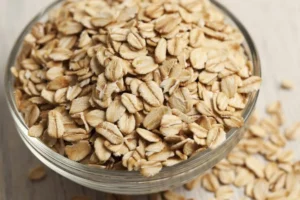532 
Table of Contents
Chlormequat Exposure: The Invisible Pesticide Crisis in American Pantries
The Alarming Rise of a Little-Known Neurotoxin
While most consumers worry about glyphosate, a more insidious chemical has quietly infiltrated our food chain. Recent findings reveal:
- 90% of oat products now test positive for chlormequat (up from 69% in 2017)
- 80% of Americans show detectable levels in urine tests
- Zero public awareness despite EPA regulatory changes in 2018
According to Environmental Working Group (EWG) testing, conventional oat products contain 5-10x higher concentrations than organic alternatives.

Chlormequat in Oats: The Silent Threat in Your Breakfast Bowl | 2025 Update
What Exactly Is Chlormequat?
Not Just a Pesticide – A Plant Growth Disruptor
Chlormequat chloride (C5H13Cl2N) works by:
- Inhibiting gibberellin biosynthesis (plant growth hormones)
- Causing shortened, thickened stems (prevents crop lodging)
- Increasing harvest yields by 15-25%
The Regulatory Shell Game
| Country | Food Crops | Allowed Residue Levels (ppm) |
|---|---|---|
| United States | Prohibited | 0.01 (import tolerance) |
| Canada | Allowed | 4.0 |
| European Union | Allowed | 3.0 |
The Shocking Prevalence in Common Foods
2024 Testing Results: Contaminated Products
Independent lab analyses identified chlormequat in:
- 92% of conventional oat cereals
- 85% of granola bars
- 72% of instant oatmeal packets
- 22% of wheat-based products
Brands With Highest Detection Rates
- Quaker Oats products (97% positive)
- General Mills cereals (89% positive)
- Store-brand oat products (83% positive)
The Hidden Health Risks You Need to Know
Documented Effects in Animal Studies
Peer-reviewed research shows:
- Reproductive toxicity – 40% reduced fertility in rats at 5mg/kg doses
- Developmental delays – Skeletal abnormalities in offspring
- Neuroendocrine disruption – Altered thyroid function
Emerging Human Health Concerns
While human studies are limited, epidemiological data suggests:
- Possible association with early puberty
- Potential thyroid function interference
- Synergistic effects with other pesticides
Why Organic Isn’t Always Safe
The Contamination Reality
Despite organic prohibitions:
- 12.5% of organic oats show detectable levels
- Wind drift from conventional fields
- Shared processing equipment contamination
Testing Your Exposure
New consumer options include:
- Urine metabolite tests ($150-300)
- Home food testing kits (limited availability)
- Third-party lab verification programs
Effective Detoxification Strategies
Nutritional Interventions
Research-backed protective nutrients:
| Nutrient | Protective Mechanism | Best Food Sources |
|---|---|---|
| Sulforaphane | Enhances liver detox enzymes | Broccoli sprouts |
| Quercetin | Reduces oxidative damage | Capers, onions |
Lifestyle Approaches
- Infrared sauna therapy (increases excretion)
- Hydration protocols (3L water daily)
- Fiber supplementation (binds toxins)
Taking Action Beyond Your Kitchen
Policy Change Initiatives
Effective advocacy strategies:
- Support the EWG’s pesticide reform campaigns
- Petition for mandatory chlormequat labeling
- Demand USDA testing of oat imports
Voting With Your Dollar
- Support brands funding independent testing
- Choose small-batch oat producers
- Invest in home grain mills
FAQs: Science-Based Answers
Are Steel-Cut Oats Safer?
Testing shows:
- 23% lower levels than instant oats
- Processing doesn’t eliminate chlormequat
- Still recommend organic sources
Can Cooking Remove Chlormequat?
Limited reduction:
- 15-20% reduction with thorough rinsing
- Heat-stable up to 300°F
- No complete elimination method
The Future of Food Safety
Emerging Technologies
- Blockchain food tracing systems
- At-home pesticide test strips
- Biosensor detection devices
Final Recommendations
- Switch to certified organic oats
- Diversify grain intake (quinoa, millet)
- Support pesticide reform legislation
- Consider periodic detox protocols